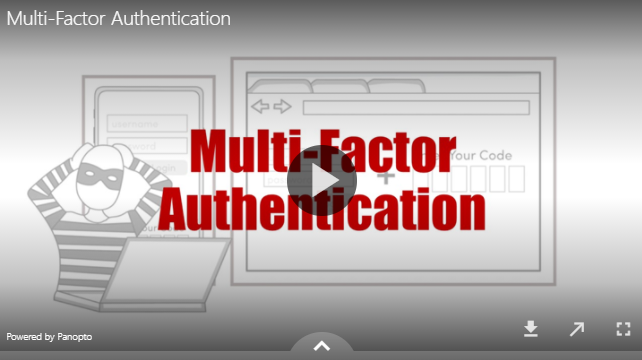When users ask ITS about how best to protect their online data and identity, using Multi-Factor Authentication is one of our top tips. ITS is planning to use this security feature in the coming months to better protect Clark’s information.
To help you get started, here is a short introduction to Multi-Factor Authentication.
What is Multi-Factor Authentication?
Click below to watch a short (3 minute) video about Multi-Factor Authentication.
Multi-Factor Authentication (MFA), sometimes referred to as Two-Step Login, Two-Factor Authentication, or 2FA, is a security enhancement that requires you to present two (or more) pieces of evidence of who you are when logging in to an account. This evidence should fall into two (or more) of these three categories:
- something you know: for example, a password or PIN
- something you have: for example, an application on your phone or a bank card
- something you are: for example, a fingerprint or retinal scan
In fact, you probably already use Multi-Factor Authentication in some form. For example, you’ve used it if you’ve:
- swiped your bank card (something you have) at the ATM and then entered your PIN (something you know).
- logged into a website, like Amazon, with a username and password (something you know) and was then sent a numeric code to your phone (something you have), which you entered to gain access to your account.
Multi-Factor Authentication helps to protect your personal data, identity and money. ITS recommends enabling Multi-Factor Authentication (or Two-Step Login) where available for any online services that you use regularly such as Google/Gmail, Apple and others.
Multi-Factor Authentication and Clark
Over the next two semesters, Clark University will begin to introduce Multi-Factor Authentication as a log-in option (and eventual requirement) for access to certain systems. This additional layer of security will help protect Clark’s computing resources, your personal data, and reduce the impact of phishing scams.
Be on the look–out over the next few months for more information on this change and know that ITS will be here to help every step of the way.

